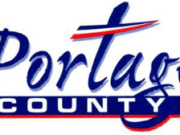Garrettsville – A hot and emotional topic lately in the village of Garrettsville has been the village’s finances and whether or not the village is in financial trouble. The mayor has stated that several residents have approached him asking if the village is “broke”.
The village, as of this writing, is not in debt nor is it “broke”. However, the concern that’s been raised is not about today’s finances, but deficit spending and what that may mean for the future.
To begin, let’s define a few terms: Debt – An amount of money borrowed by one party to another under the condition that it is to be paid back at a later date, usually with interest. Deficit – the amount by which expenses exceed income or costs outstrip revenues. Deficit essentially refers to the difference between cash inflows and outflows. Revenue – In the case of government, revenue is the money received from taxation, fees, fines, inter-governmental grants or transfers, securities sales, mineral rights and resource rights, as well as any sales that are made. Carryover Balance – the amount of money left over at the end of the fiscal year after all expenses have been paid for that year. Discretionary Spending – money spent on non-essential goods and services.
At the January village council meeting, Councilman Steve Hadzinsky presented his concerns to council over decreasing carryover balances for the past four years. Hadzinsky presented facts showing, since 2009, a steady decline in carryover balances – with an exception in 2012 when the village received a significant windfall from an estate. (Without that windfall, 2012 would have been a deficit year as well.) Hadzinsky asked council to agree that they have indeed been in a spending deficit and asked for the establishment of a minimum carryover balance amount.
“Spending needs to be reined in”. Hadzinsky told council. Hadzinsky showed in his report that all of the obligatory spending or fixed, budgeted expenses (salaries and benefits- including police, utilities, insurances, etc.) are covered by generated revenue and there is an additional approximate $12,000 monthly to cover discretionary spending (unbudgeted, variable expenses like salt for the roads, sidewalk repair & replacement, new vehicles, etc.). The problem, as he sees it, is that for the past several years, Garrettsville council has approved expenditures that were not funded by revenue, but by carryover balances from previous years.
These ‘carryover balances’ are what equates to you and me as money from our savings accounts –not part of our regular income and expenses, but saved funds that have accumulated. Hadzinsky wants council to be more aware of their spending and plan accordingly.
Council President Tom Hardesty agrees, and says that effort was made in 2014 to curb spending. A large part of that spending was overtime in the police department which Hardesty himself worked with police chief Tony Milicia to curb. Overtime hours were cut from 1354.5 hours in 2013 to just 340.5 in 2014. A significant savings when you consider that overtime hours for the police department include increased matching contributions into their retirement funds as well.
Unfortunately revenue for Garrettsville has decreased dramatically over the past several years. Much of that has to do with Amweld and Warren Tool closing their doors in 2007 – 2008. Village residents did approve an increase in the village income tax rate at the end of 2007, however the hike didn’t replace even half of the revenue lost from the closed businesses. And, to add insult to injury, the state of Ohio has been steadily decreasing the amount of funding it sends to municipalities. According to Hardesty, the village was getting $100,000 annually in state funds and now that figure is down to $8000.
Hardesty states he is well aware of the deficit spending issues and has been working at developing a spreadsheet that easily shows council where the money is spent on an annual basis and hopes that this clarity will allow for some adjustments. According to Hardesty, it’s important for the village to ‘live within its means’ and he thinks it can be accomplished without cutting services or raising income taxes. Hardesty suggested at the January village council meeting that a minimum carryover balance figure should be formally established when council finalizes the 2015 budget next month.
The county auditor’s office recommends that carryover budget amounts should equal about two months of the village’s operating expenses, which it currently is. The village receives revenue on a monthly basis and though there are peaks and valleys to the actual cash flow, the village’s fixed annual expenses are less than the annual revenue, which means the village operates in the black.
Hardesty admits that there is room for improvement as far as how the village spends money, but he also feels that as a whole, the village is in pretty good shape financially. He’s proud of the services the village offers its residents and doesn’t think curbing some spending will affect the quality of service residents are used to.













